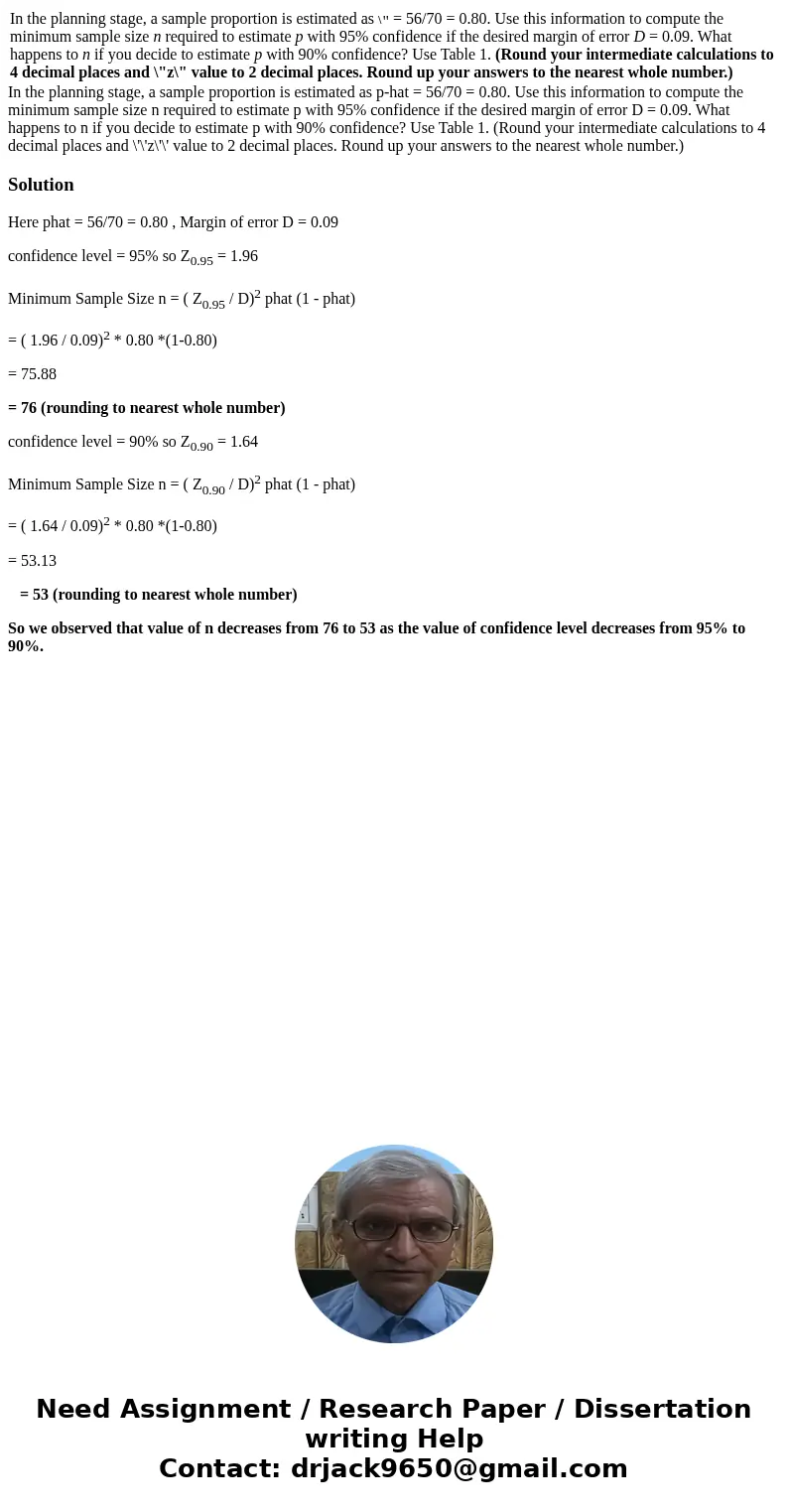| In the planning stage, a sample proportion is estimated as  = 56/70 = 0.80. Use this information to compute the minimum sample size n required to estimate p with 95% confidence if the desired margin of error D = 0.09. What happens to n if you decide to estimate p with 90% confidence? Use Table 1. (Round your intermediate calculations to 4 decimal places and \"z\" value to 2 decimal places. Round up your answers to the nearest whole number.) = 56/70 = 0.80. Use this information to compute the minimum sample size n required to estimate p with 95% confidence if the desired margin of error D = 0.09. What happens to n if you decide to estimate p with 90% confidence? Use Table 1. (Round your intermediate calculations to 4 decimal places and \"z\" value to 2 decimal places. Round up your answers to the nearest whole number.) |
In the planning stage, a sample proportion is estimated as p-hat = 56/70 = 0.80. Use this information to compute the minimum sample size n required to estimate p with 95% confidence if the desired margin of error D = 0.09. What happens to n if you decide to estimate p with 90% confidence? Use Table 1. (Round your intermediate calculations to 4 decimal places and \'\'z\'\' value to 2 decimal places. Round up your answers to the nearest whole number.)
Here phat = 56/70 = 0.80 , Margin of error D = 0.09
confidence level = 95% so Z0.95 = 1.96
Minimum Sample Size n = ( Z0.95 / D)2 phat (1 - phat)
= ( 1.96 / 0.09)2 * 0.80 *(1-0.80)
= 75.88
= 76 (rounding to nearest whole number)
confidence level = 90% so Z0.90 = 1.64
Minimum Sample Size n = ( Z0.90 / D)2 phat (1 - phat)
= ( 1.64 / 0.09)2 * 0.80 *(1-0.80)
= 53.13
= 53 (rounding to nearest whole number)
So we observed that value of n decreases from 76 to 53 as the value of confidence level decreases from 95% to 90%.

 Homework Sourse
Homework Sourse